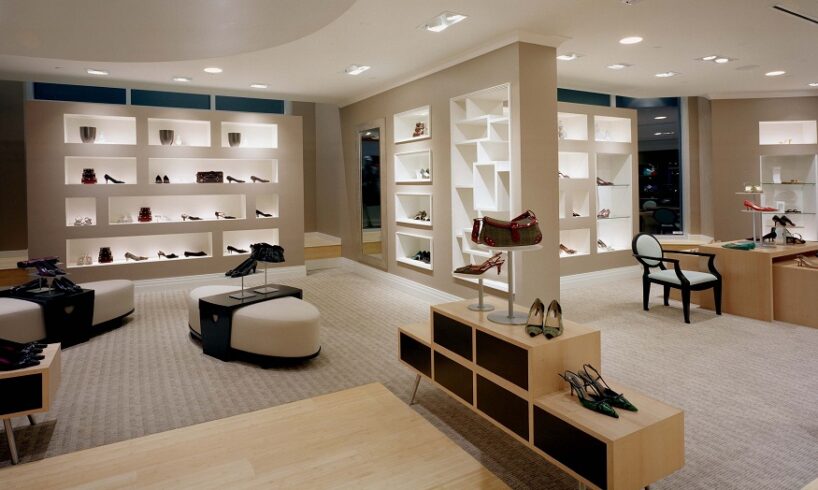
Introduction:
The design of a retail store holds immense significance in shaping customer experiences, influencing purchasing decisions, and ultimately impacting business success. A well-designed retail store creates an appealing environment and aligns with the brand image and business objectives. In this article, we will explore the benefits and objectives of retail store design, focusing on its role in enhancing customer satisfaction, driving sales, and establishing a unique brand identity.
Benefits of Retail Store Design:
Enhanced Customer Satisfaction:
A thoughtfully designed retail store can significantly enhance customer satisfaction. By creating a visually appealing and functional space, retailers can provide their customers a pleasant and convenient shopping experience. Elements such as clear signage, intuitive layouts, and well-organized product displays contribute to easy navigation and efficient customer service. When customers feel comfortable and find it effortless to locate and explore products, their overall satisfaction increases, improving customer loyalty and positive word-of-mouth.
Increased Sales and Conversion Rates:
An effective store design directly impacts sales and conversion rates. Retail Store Design services can capture customers’ attention and encourage impulse purchases by strategically placing high-demand items, utilizing eye-catching displays, and creating enticing product arrangements. A well-designed layout also facilitates cross-selling and upselling opportunities, maximizing the potential for increased sales. When the store environment is visually appealing, engaging, and conducive to browsing, customers are likelier to spend more time in the store and make additional purchases.
Establishing Brand Identity:
The retail store design is pivotal in establishing and reinforcing a brand’s identity. By using consistent colors, signage, and visual elements, retailers can create a unique and recognizable brand image. A well-designed store reflects the brand’s essence, conveying its personality, values, and positioning. This alignment between the store design and brand identity helps create a memorable and differentiated shopping experience, making a lasting impression on customers and increasing brand recognition.
Differentiation from Competitors:
In a competitive retail landscape, standing out from competitors is crucial for success. Retail store design provides an opportunity for differentiation. By creating a distinct and memorable environment, retailers can attract customers and set themselves apart from competitors. Unique architectural elements, creative displays, and immersive experiences can capture customers’ attention and create a sense of exclusivity. When a store offers a one-of-a-kind experience, customers are more likely to choose it over competitors, driving foot traffic and sales.
Objectives of Retail Store Design:
Optimize Customer Flow and Engagement:
One of the primary objectives of the retail store design is to optimize customer flow and engagement within the store. This involves creating a layout that facilitates easy navigation, guides customers through different product categories, and encourages exploration. By strategically placing focal points, such as attractive displays or interactive areas, retailers can keep customers engaged and encourage them to interact with products, increasing customer satisfaction and sales opportunities.
Enhance Visual Merchandising:
Visual merchandising is a critical aspect of retail store design. The objective is to showcase products appealingly and enticingly, capturing customers’ attention and generating interest. A well-designed store provides the backdrop for effective visual merchandising, allowing retailers to create eye-catching displays, highlight key products, and communicate the brand’s story. The goal is to create a visually stimulating environment that drives customer engagement, promotes cross-selling, and maximizes sales potential.
Optimize Space and Operational Efficiency:
Efficiency is another objective of retail store design. When you engage 3d architectural rendering services they plan a well-designed layout that ensures optimal use of available space, allowing for clear pathways, effective product placement, and efficient customer and employee movement. By minimizing clutter, avoiding congestion, and streamlining operational processes, retailers can create a seamless and hassle-free shopping experience. Operational efficiency improves customer satisfaction, enhances employee productivity, and reduces costs.
Conclusion:
Retail shop design has several benefits and achieves multiple goals. Retail shop design may boost customer happiness, sales, brand identification, and competitiveness. Retailers may create engaging, efficient, and memorable shop environments that affect consumers and generate company success by optimizing customer flow, visual merchandising, target market, space and operations, and flexibility. Good retail store design creates a great shopping experience and builds consumer loyalty.
